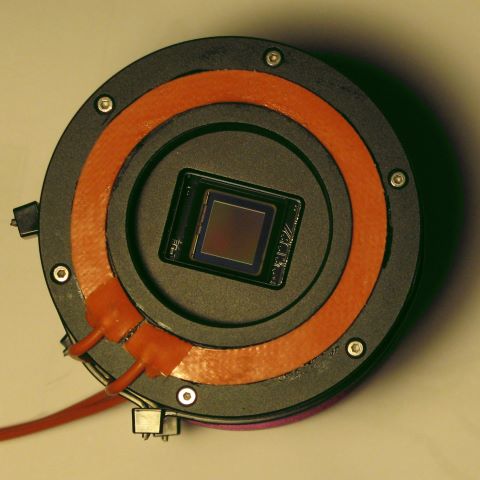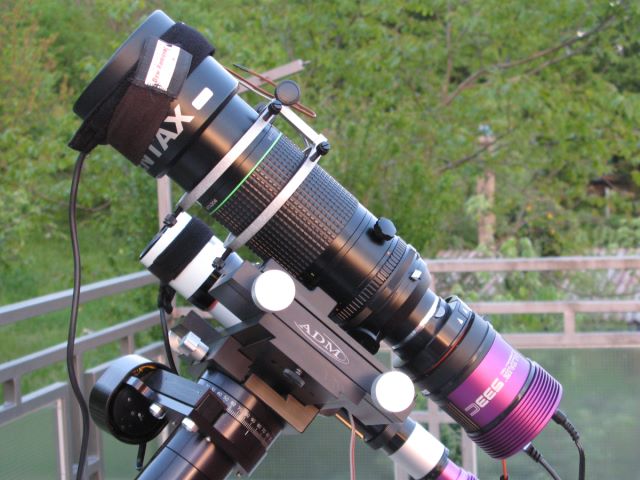
Ever since SBIG ST-4000XM camera was introduced, I wanted a camera with a square sensor to play with. Such CCD based cameras are quite expensive, so I really couldn't justify buying another one just because of an interesting sensor format. But now there are several affordable options based on Sony IMX533 CMOS sensor available. I could finally get one without going broke. Such cameras are available from QHY, ZWO, and then there is a bunch of cameras made by ToupTek Photonics and branded as Omegon, Altair, TS-Optics, RisingCam, ... For no particular reason I decided to get an Altair branded one (OK, that camera has the most interesting color, I admit).
The full name of the camera is Altair Hypercam 533C. It is a bit larger than ZWO or QHY models, but it is rather light for its size. Usually when something is lighter than expected that makes me a bit suspicious, but build quality of the camera is decent, nothing to complain about there. Camera is delivered in a serviceable hard case, with all the necessary cables and power supply included. It is single-shot color camera, with Bayer matrix on the sensor. Regulated dual stage thermoelectric cooling can cool the sensor more than 40 °C below the ambient temperature. At the back of the camera there is one USB 3.0 port for connection to the PC, USB 2.0 hub for accessories and power connection. There is no ST-4 guiding port. Unlike some other cameras, this camera will not work without a power supply.
The camera is equipped with a heated optical window, which is also an UV/IR filter. My only real complaint about the camera is that the heater is not strong enough to prevent dew forming on the window in some circumstances. The ugly contraption on the camera is an external heater that solves that problem.

